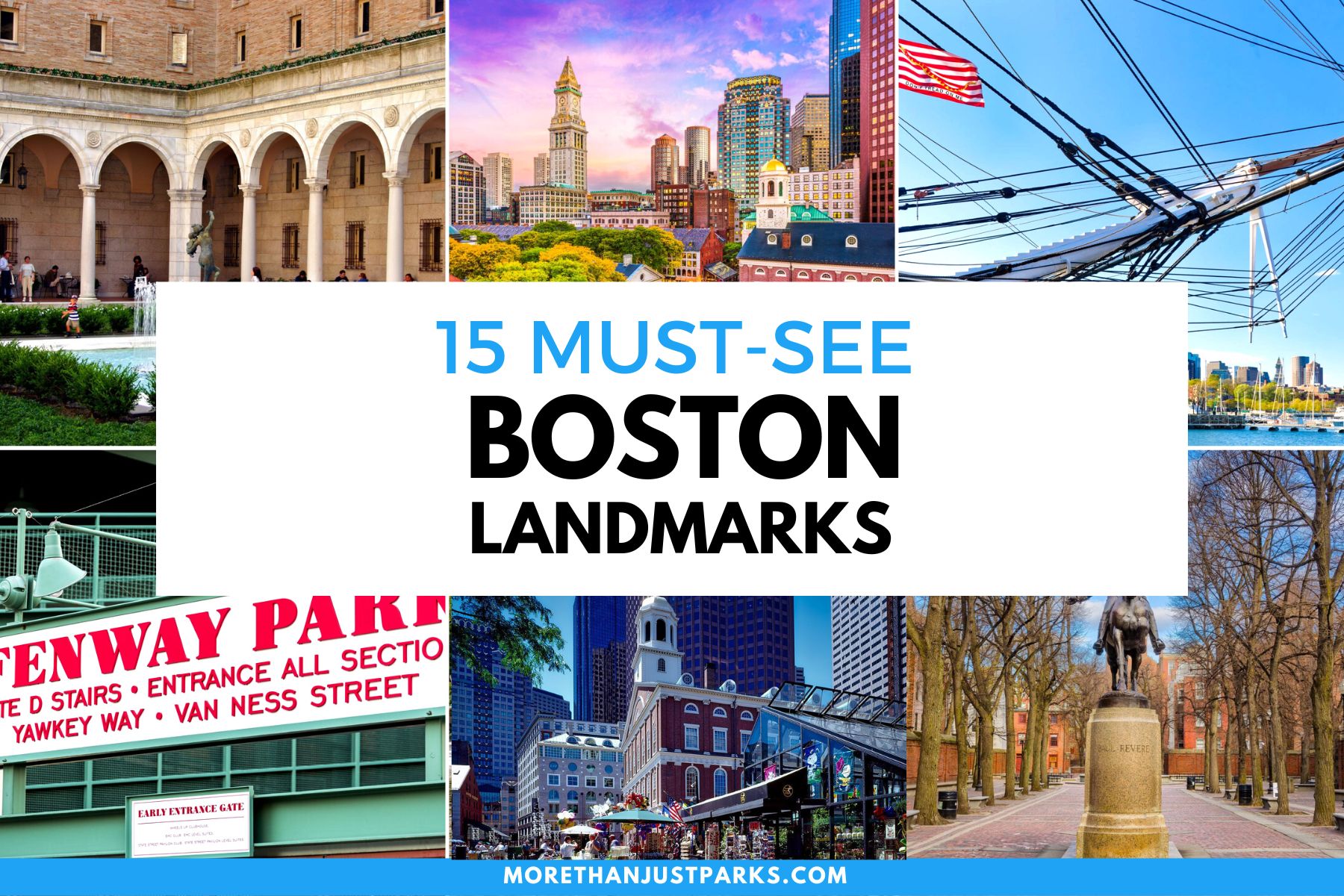
Article Summary: Boston Landmarks
Boston Landmarks. More Than Just Parks has 15 incredible must-see sites for you to visit.
There’s so much more to this exciting place than the Boston Red Sox. In this article, we’ll familiarize you with the incredible landmarks located in Beantown.
We’ve got incredible places, iconic memorials, fascinating museums, epic monuments and so much more.
We’re going to give you our list of the Top 15 Landmarks In Boston.
So, What Is A Landmark?
Well, it’s a place of “a special character or special historical or aesthetic interest or value as part of the development, heritage, or cultural characteristics of a city, state, or nation.”
Why visit these places? Because landmarks connect us to the past. Through visiting these wonderful places where history occurred we find our roots. It allows us to feel like we are a part of something much bigger than ourselves.
And, speaking of history, did I mention that I taught the subject? I spent a lifetime teaching about the history behind many of these amazing sites. Then I got to see them firsthand. And now I’m sharing the fascinating stories of these places with you. It doesn’t get any better than that!
So, without further ado, let’s dive in.
Table Of Contents
Boston Landmarks
Some Fascinating Facts About Boston
Here are some fascinating facts about the city of Boston:
- Boston is the capital and largest city of the state of Massachusetts, located in the northeastern region of the United States.
- The city was founded in 1630 by Puritan settlers from England and played a significant role in the American Revolution.
- Boston is known for its rich history, world-class universities, museums, and cultural attractions.
- The city is home to numerous colleges and universities, including Harvard University, Massachusetts Institute of Technology (MIT), and Boston University.
- The Boston Marathon, one of the oldest and most prestigious marathons in the world, is held annually on Patriot’s Day in April.
- The Boston Tea Party, a political protest that occurred in 1773, was a key event leading up to the American Revolution.
- The Boston Common, a 50-acre public park in downtown Boston, is the oldest city park in the United States.
- Fenway Park, home to the Boston Red Sox baseball team, is the oldest Major League Baseball stadium still in use.
- The Paul Revere House, built in 1680, is the oldest surviving building in downtown Boston and is open to the public for tours.
- Boston is known for its seafood, especially its clam chowder and lobster rolls, as well as its baked beans and Boston cream pie.
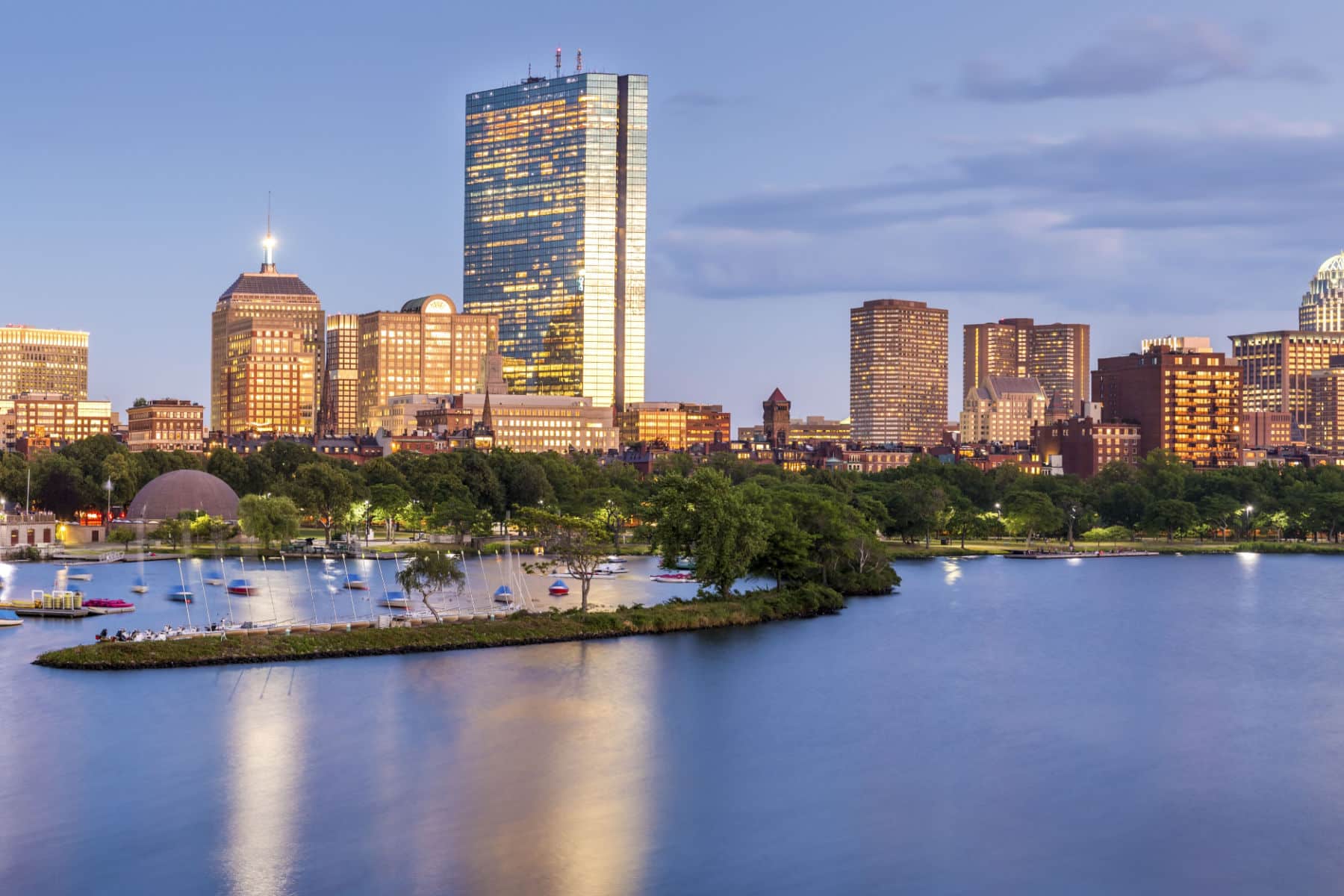
Top 15 Boston Landmarks
15. Boston Irish Famine Memorial
We begin our list of the Best Boston Landmarks at #15 with the Boston Irish Famine Memorial.
It commemorates the Great Irish Famine of the 1840s and the Irish immigrants who came to the United States seeking a better life. The memorial was designed by Robert Shure and unveiled in 1998.
The idea for the memorial was first proposed in 1984 by Irish-American activist and Boston City Councilor James M. Kelly. Kelly wanted to create a memorial to honor the more than one million people who died during the Irish Famine, as well as the many Irish immigrants who came to the United States and settled in Boston during that time. He felt that the city needed a permanent reminder of the suffering and hardship that the Irish endured, and he worked tirelessly to make the memorial a reality.
After several years of planning and fundraising, a design for the memorial was selected in 1996. The design, by sculptor Robert Shure, features a group of bronze figures standing on a granite base. The figures represent a family of famine victims, with a mother and father holding their dying child. The figures are surrounded by 32 bronze plaques, each depicting a scene from the famine and its aftermath.
The memorial was unveiled on June 28, 1998, in a ceremony that was attended by thousands of people, including Irish dignitaries and descendants of famine survivors. The ceremony featured speeches by Kelly, Mayor Thomas Menino, and others, as well as performances by Irish musicians and dancers.
Since its unveiling, the Boston Irish Famine Memorial has become an important part of the city’s cultural landscape. It is a place of remembrance and reflection, as well as a symbol of the enduring spirit and resilience of the Irish people.
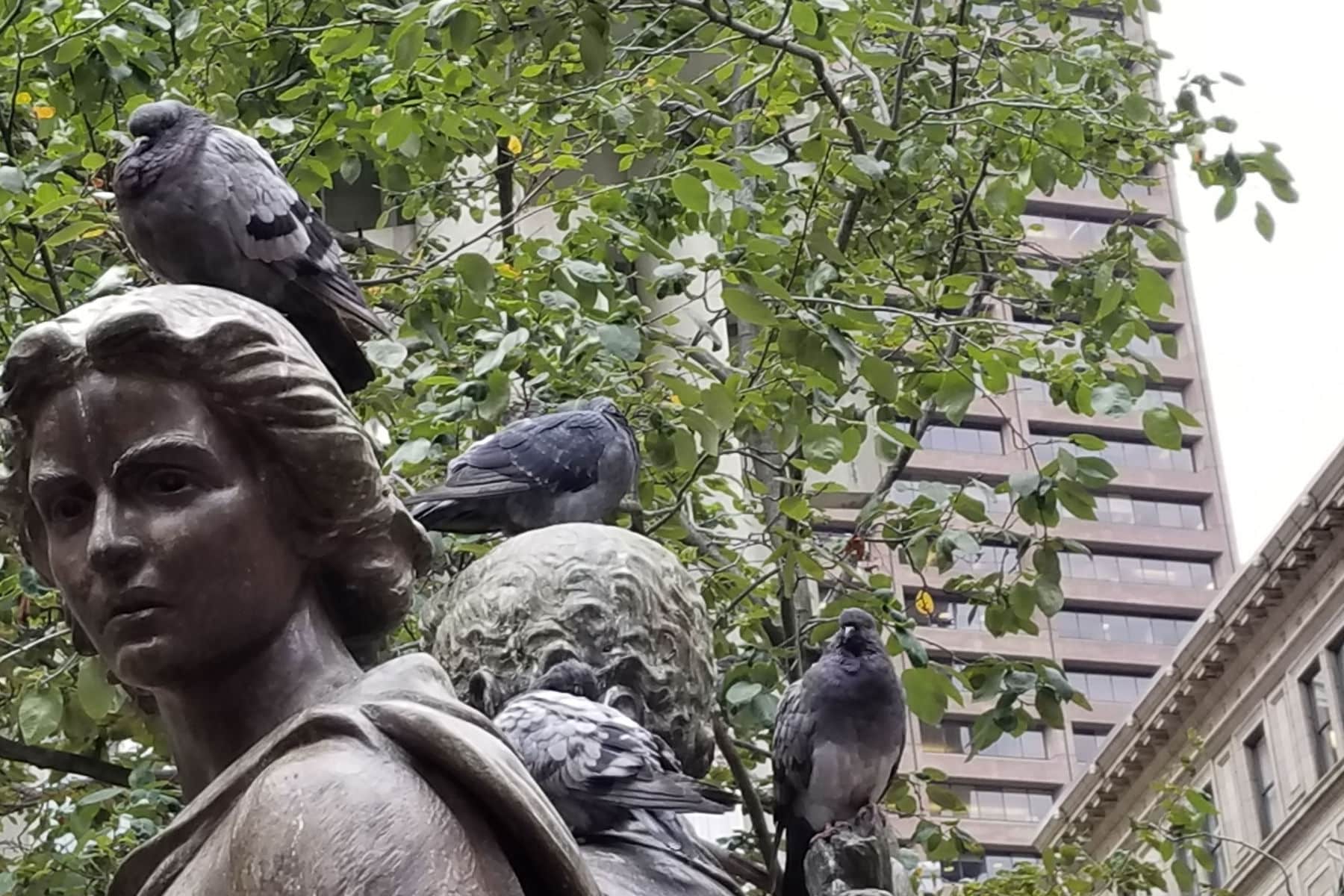
14. The New England Holocaust Memorial
We move from one tragic event to another. Next up on our list of the Best Boston Landmarks is The New England Holocaust Memorial.
The New England Holocaust Memorial serves as a memorial to the six million Jews who were murdered during the Holocaust. The memorial was designed by Stanley Saitowitz and was opened to the public in 1995.
The idea for the memorial was first proposed in 1989 by a group of Holocaust survivors and local leaders, who wanted to create a permanent reminder of the atrocities of the Holocaust and honor the memories of those who perished.
The Towers Symbolize The Lives Lost In The Holocaust
The memorial consists of six glass towers, each 54 feet tall, arranged in a grid pattern. The towers are illuminated from within, and the interiors are lined with translucent glass panels etched with numbers, names, and other symbols related to the Holocaust. Visitors are invited to walk through the towers, which symbolize the six million Jews who were killed during the Holocaust.
The New England Holocaust Memorial was officially dedicated on October 22, 1995, in a ceremony that was attended by Holocaust survivors, local leaders, and dignitaries from around the world. Since its opening, the memorial has become an important site of remembrance and education, with thousands of visitors coming each year to learn about the Holocaust and honor the memories of its victims.
In 2017, the memorial was vandalized twice in the same summer, with a teenager throwing a rock at one of the towers and shattering a glass panel. However, the community quickly rallied to repair the damage and strengthen security measures, demonstrating the resilience and determination to keep the memory of the Holocaust alive.
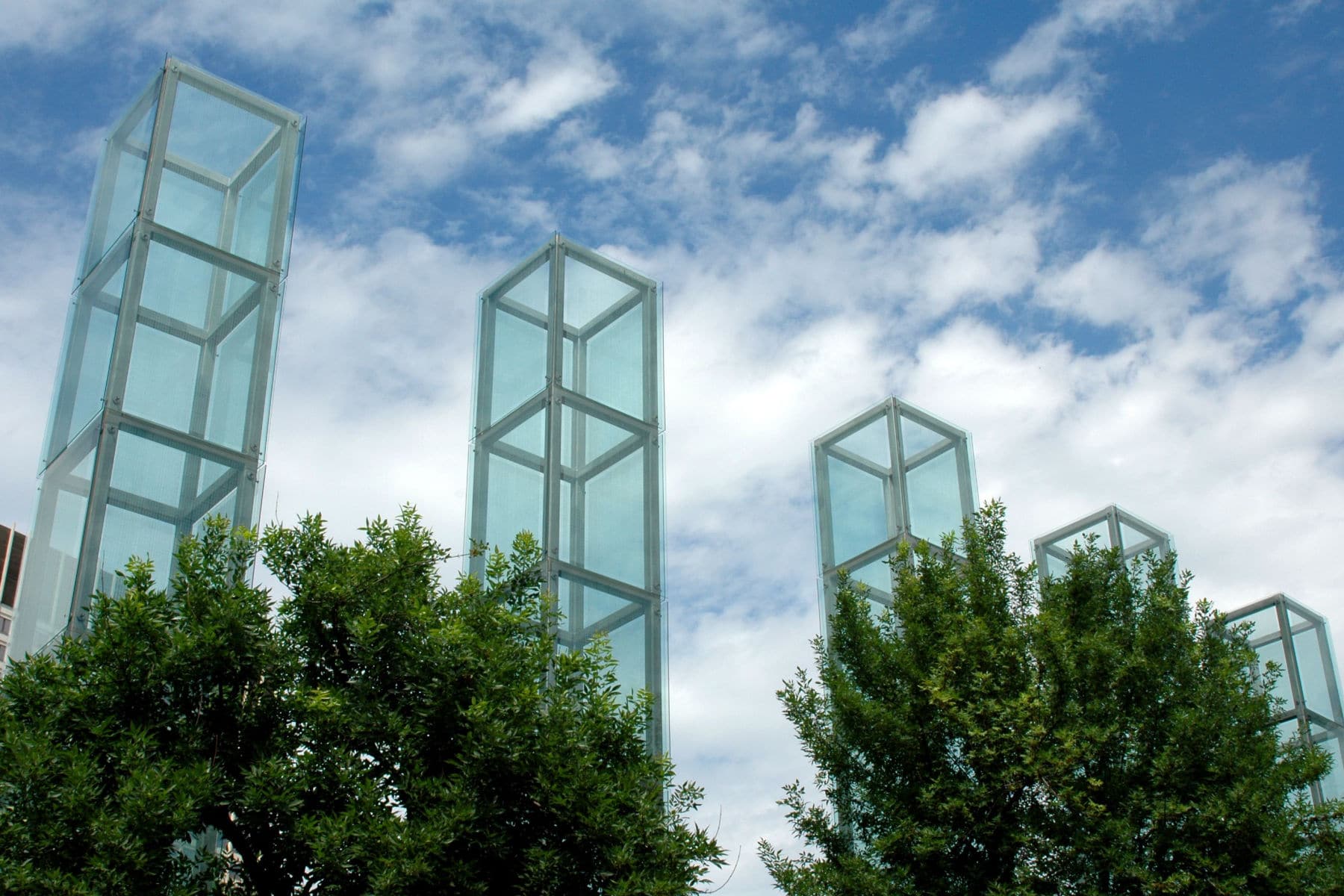
13. Faneuil Hall Marketplace
We shift gears as our next Boston landmark combines appealing mix of local shops, international brands, street performers, top restaurants, pubs, and food stalls. They all spill out onto its cobblestone plaza, which is a historic market area where merchants and shoppers have come together for almost four centuries.
At #13 on our list of the Best Boston Landmarks is Faneuil Hall Marketplace.
Faneuil Hall Marketplace is one of the most popular tourist destinations in the city. The marketplace was founded in 1742 by Peter Faneuil, a wealthy Boston merchant who donated the land and the building to the city as a gift.

The Hall Became A Center Of Political Activity
Faneuil Hall was originally intended as a public meeting hall and marketplace for Boston’s growing population. The hall quickly became a center of political activity, serving as a venue for speeches and debates by many notable figures, including Samuel Adams and James Otis.
It was also the site of the first public reading of the Declaration of Independence in Boston in 1776.
In the 19th and early 20th centuries, Faneuil Hall became a center of commerce, with merchants and vendors selling goods and produce in the adjacent Quincy Market building. The marketplace continued to thrive in the mid-20th century, but by the 1960s it had fallen into disrepair and was in danger of being demolished.
In 1969, the city of Boston launched a major redevelopment project to restore and modernize Faneuil Hall and the surrounding area. The marketplace was expanded and renovated, and new buildings were added to the site, including the North Market and South Market buildings. The entire complex was renamed Faneuil Hall Marketplace.
Today, Faneuil Hall Marketplace is a vibrant shopping and dining destination, with dozens of restaurants, shops, and street performers. The marketplace attracts millions of visitors each year and remains an important landmark and symbol of Boston’s rich history and culture.
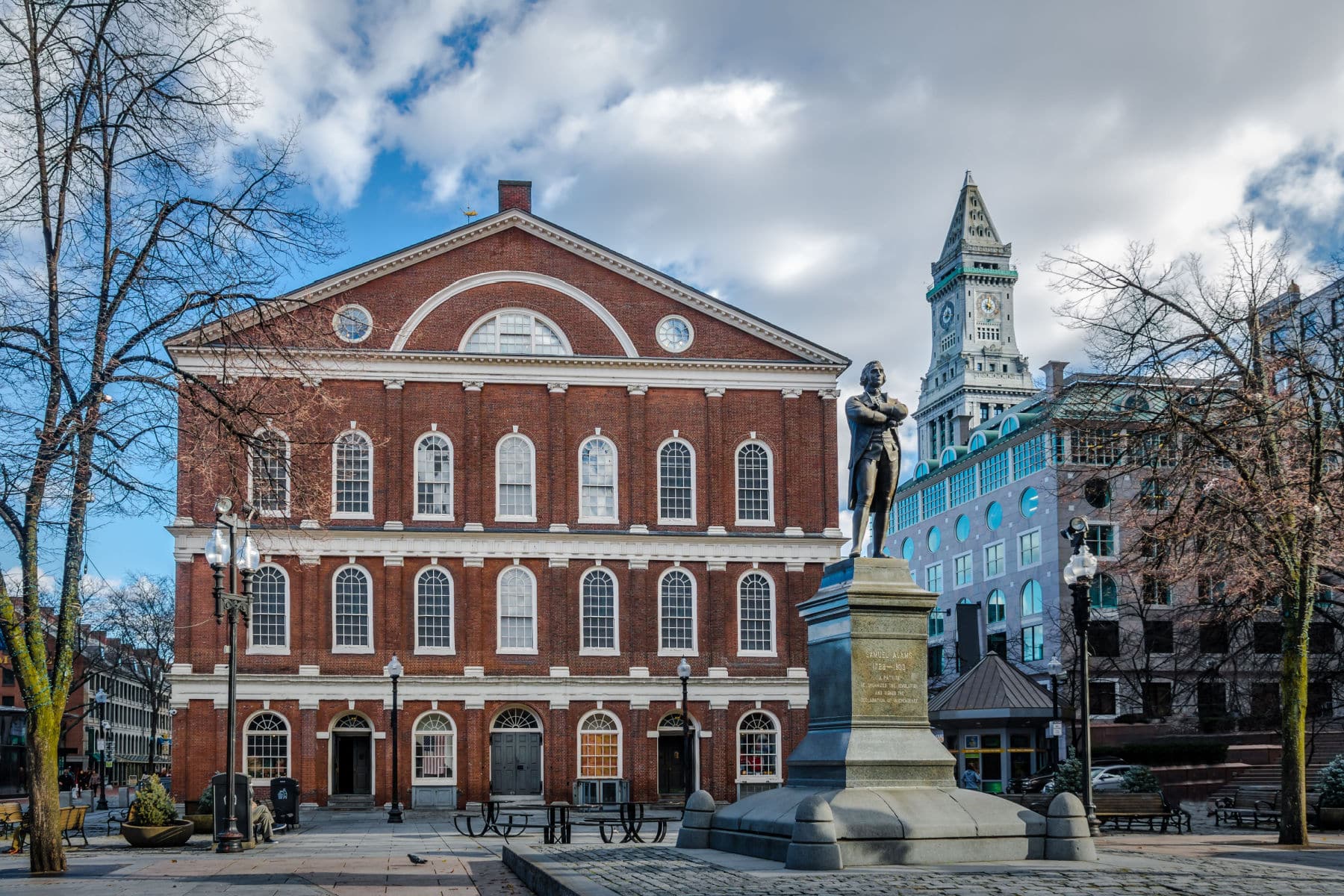
12. Isabella Stewart Gardner Museum
Our next Boston landmark is much admired for the intimate atmosphere in which its works of art are displayed and for its flower-filled courtyard. It’s also the place where an amazing robbery captured the public’s imagination a long time ago.
At #12 on our list of the Best Boston Landmarks is the Isabella Stewart Gardner Museum.
The Isabella Stewart Gardner Museum is an art museum located in Boston, Massachusetts. The museum was founded by Isabella Stewart Gardner, a prominent Boston socialite and art collector who began acquiring artwork in the late 19th century.
Gardner’s passion for art led her to travel extensively throughout Europe, where she acquired a wide variety of paintings, sculptures, and decorative arts. In 1898, she purchased a plot of land in Boston’s Fenway neighborhood and began construction on a museum to house her growing collection.
The museum, which was designed to resemble a 15th-century Venetian palace, opened to the public in 1903. Gardner herself oversaw the installation of the artwork and the design of the museum’s interior, which includes a central courtyard surrounded by galleries and salons.
Over the years, Gardner continued to acquire new artwork for the museum, and she made several significant donations to other cultural institutions in Boston. She also hosted many notable guests at the museum, including artists, musicians, and writers.
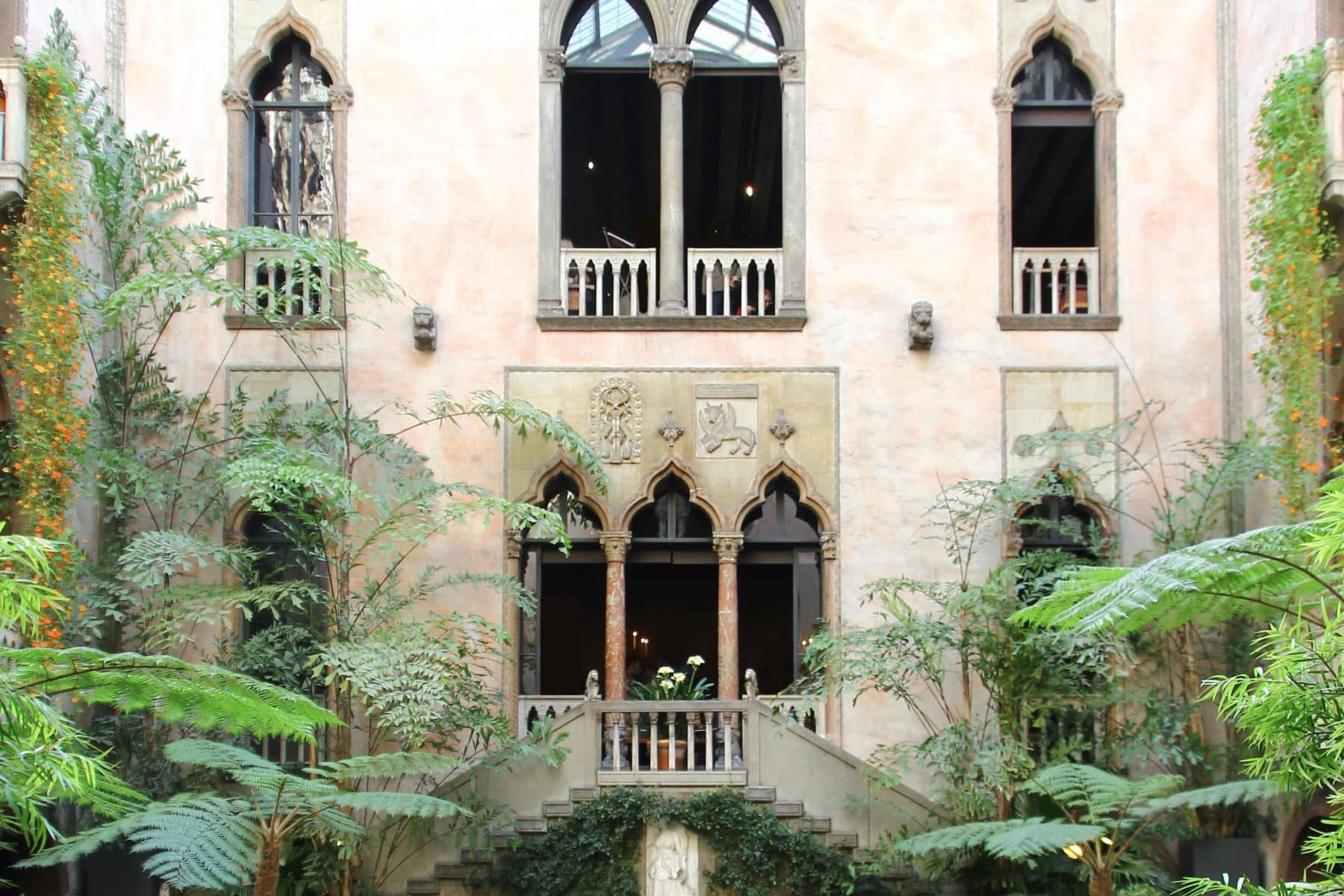
It Was The Site Of A Famous Robbery
The robbery at the Isabella Stewart Gardner Museum is one of the most notorious art heists in history. On March 18, 1990, two men dressed as police officers gained entrance to the museum and stole 13 works of art, including paintings by Vermeer, Rembrandt, and Manet, with an estimated total value of over $500 million.
The thieves entered the museum at around 1:30 am and claimed they were responding to a disturbance call. They handcuffed the two security guards on duty and proceeded to cut several valuable works of art from their frames. The entire operation took about 81 minutes.
Despite an extensive investigation and numerous leads, the stolen artwork has never been recovered, and the thieves have never been identified. The FBI has offered a $10 million reward for information leading to the recovery of the stolen art, but so far, no credible leads have emerged.
The theft had a profound impact on the Gardner Museum, and the empty frames of the stolen artworks remain on display as a reminder of the robbery. The museum has also implemented numerous security measures to prevent future thefts, including the installation of additional cameras and sensors and the hiring of additional security personnel.
Despite this setback, the Isabella Stewart Gardner Museum remains an important cultural institution in Boston and is known for its impressive collection of European art, as well as its unique and atmospheric setting. The museum also hosts a variety of concerts, lectures, and other events throughout the year.

11. Boston Public Library
Our next Boston landmark is a pioneer of public library service in America. It was the first large free municipal library in the United States, the first public library to lend books, the first to have a branch library, and the first to have a children’s room.
At #11 on our list of the Best Boston Landmarks is the Boston Public Library.
The library was founded in 1848 by a group of prominent Bostonians who wanted to create a free public library for the city’s residents.
The original library was housed in a room in the Massachusetts State House, but it quickly outgrew its space and was moved to a larger location in 1854. Over the years, the library continued to expand, and in 1895, it moved to its current location in Copley Square.
The new library building was designed by architect Charles Follen McKim in the Renaissance Revival style and was modeled after the Bibliothèque Nationale in Paris. The building’s grand central staircase, ornate decorations, and soaring ceilings quickly became a symbol of Boston’s cultural and intellectual vitality.

The Library Has Continued To Expand Its Collection & Services
Over the years, the Boston Public Library has continued to expand its collection and services, and it has played a major role in shaping the city’s cultural landscape. The library has been home to many notable collections, including the personal papers of John Adams and the works of William Shakespeare.
In addition to its impressive collection of books and other materials, the Boston Public Library is known for its many innovative programs and initiatives. The library has been at the forefront of efforts to digitize its collections and make them available online, and it has also launched a variety of programs aimed at promoting literacy, lifelong learning, and civic engagement.
Today, the Boston Public Library serves as a vital resource for Boston’s residents and visitors alike, offering a wide range of books, digital resources, programs, and services that reflect the city’s rich history and diverse culture.

Top 10 Boston Landmarks
10. Boston Tea Party Ships & Museum
We’re on to the Top 10 Boston landmarks. At #10 is a place which commemorates an important moment in American history. It’s the Boston Tea Party Ships & Museum.
The Boston Tea Party Ships & Museum is a historical attraction located on the waterfront in Boston, Massachusetts. The museum offers visitors an interactive and immersive experience that tells the story of the Boston Tea Party, a key event in American history that took place on December 16, 1773.
The museum includes two replica ships, the Beaver and the Eleanor, which were similar to the vessels that were involved in the Boston Tea Party. Visitors can explore the ships and learn about their history, including how they were used to transport tea from England to the American colonies.
Inside the museum, there are exhibits that use multimedia technology to bring the events leading up to the Boston Tea Party to life. Visitors can see artifacts from the time period, including tea crates and period clothing, and learn about the key players in the events that led to the Boston Tea Party.
One of the main attractions of the Boston Tea Party Ships & Museum is the reenactment of the Boston Tea Party itself. Visitors can participate in a live-action experience that recreates the events of that fateful night, including the dumping of tea into Boston Harbor.
The experience is designed to give visitors a sense of what it was like to be a part of this important moment in American history.
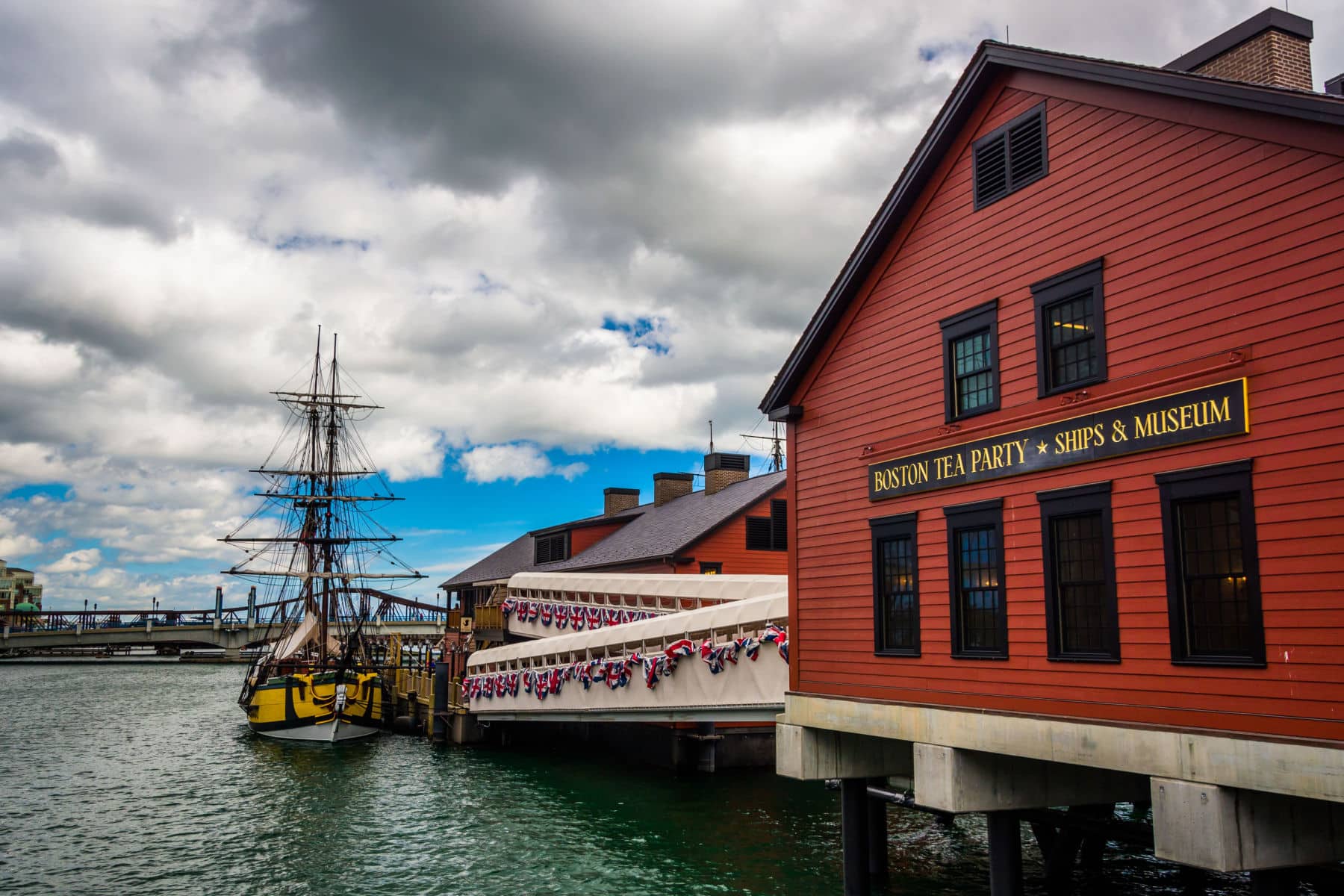
9. Old North Church & Historic Site
Our next Boston landmark is famous for the role it played in Paul Revere’s April 18, 1775, lantern signal to warn militias in Charlestown that the British were coming, launching the American Revolution.
At #9 on our list of the Best Boston Landmarks is the Old North Church & Historic Site.
The Old North Church & Historic Site is best known for its role in the American Revolution. The church was built in 1723, and is the oldest standing church building in Boston.
In 1775, the church gained national attention when two lanterns were hung in its steeple to signal to American patriots in nearby Charlestown that British troops were on the move. This event, which became known as the “One if by land, two if by sea” signal, played a significant role in the start of the American Revolution.
After the Revolution, the church continued to serve the community and underwent several renovations and additions. In 1912, the Old North Church became a National Historic Site and was designated as a historic landmark in 1960.
Today, the Old North Church & Historic Site is open to visitors and offers tours, exhibits, and educational programs. The church is still an active Episcopal parish and continues to play an important role in the community. It remains a symbol of Boston’s rich history and the struggle for American independence.
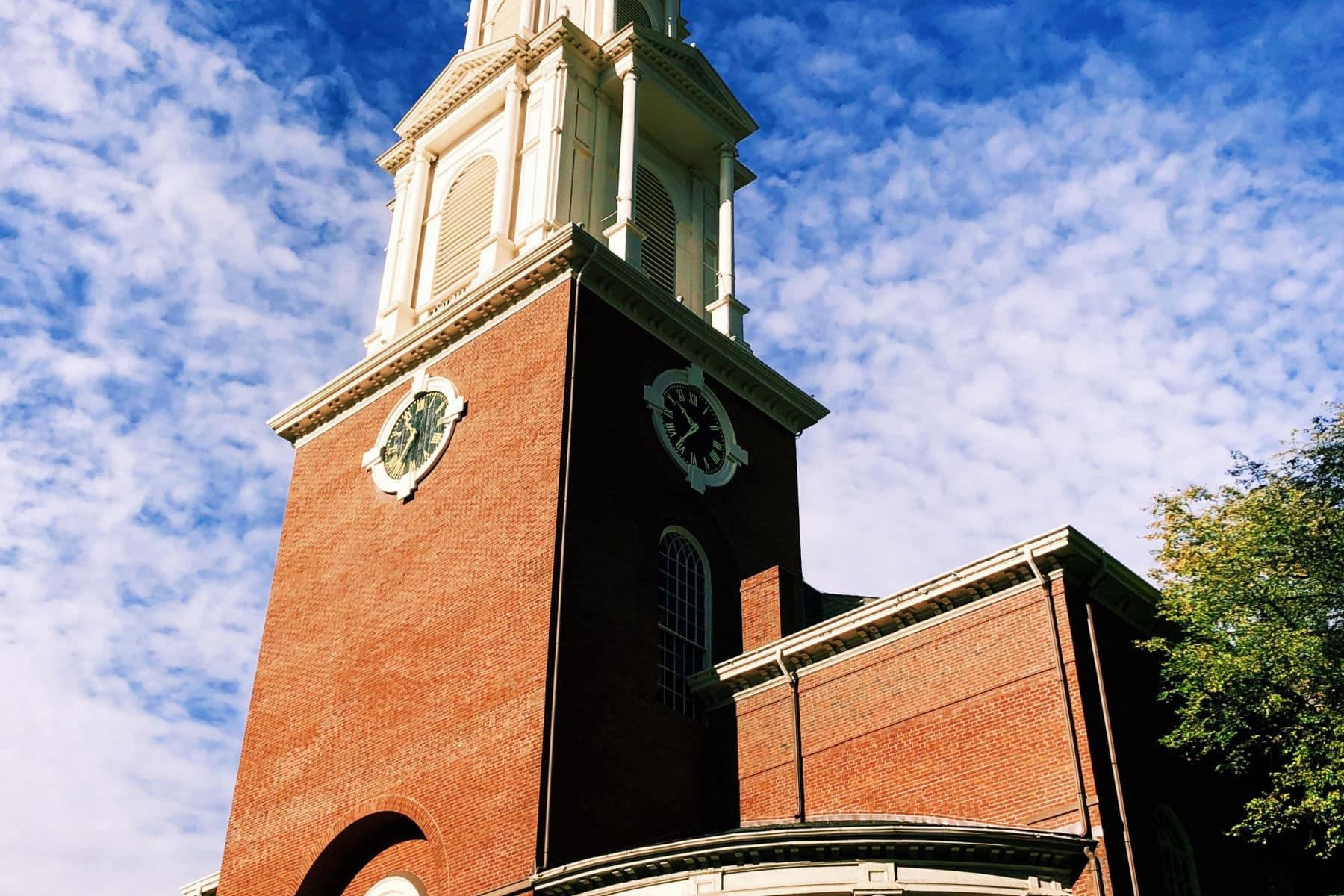
8. Boston African-American National Historic Site
Our next Boston landmark works with the Museum of African American History to preserve and interpret the inspiring history of the free Black community in antebellum Boston. This community, living on Beacon Hill, along with its white allies, led the nation in the struggle to abolish slavery.
At #8 on our list of the Best Boston Landmarks is the Boston African-American National Historic Site.
The Boston African-American National Historic Site is a collection of historic buildings and sites in Boston, Massachusetts, that commemorates the contributions of African Americans to the city’s history and culture.
The site is managed by the National Park Service and includes several buildings and landmarks associated with prominent African American figures, events, and movements.

Boston African American National Historic Site: Men dressed as Union soldiers pose by the Shaw Memorial in Boston. (Courtesy of Wikimedia Commons)
Things To Do:
Here are a few of my favorite things to do:
- Visit the African Meeting House: The African Meeting House was built in 1806 and is the oldest surviving black church building in the United States. Today, it serves as a museum and cultural center and offers exhibits and educational programs about the history of Boston’s African American community.
- Explore the Black Heritage Trail: The Black Heritage Trail is a 1.6-mile walking trail that connects more than a dozen historic sites and landmarks related to Boston’s African American history. Along the trail, you can see the homes of prominent African American leaders, visit the site of the 54th Massachusetts Infantry Regiment, and learn about the Underground Railroad.
- Attend a Ranger-led program: The site offers a variety of ranger-led programs, including walking tours, talks, and special events. These programs provide a deeper understanding of the history and culture of Boston’s African American community.
- Visit the Abiel Smith School: The Abiel Smith School was built in 1835 and was the first public school for African American children in the United States. Today, it houses the Museum of African American History, which features exhibits and artifacts related to African American history and culture.
- Explore the Museum of African American History: In addition to the Abiel Smith School, the Museum of African American History has a second location in Nantucket, Massachusetts. Both sites offer exhibits, programs, and resources related to African American history and culture.
- Visit the Robert Gould Shaw and Massachusetts 54th Regiment Memorial: The memorial honors Robert Gould Shaw and the Massachusetts 54th Regiment, which was the first black regiment to fight for the Union Army during the Civil War. The memorial is located on the Boston Common and is a powerful reminder of the sacrifices made by African American soldiers during the war.
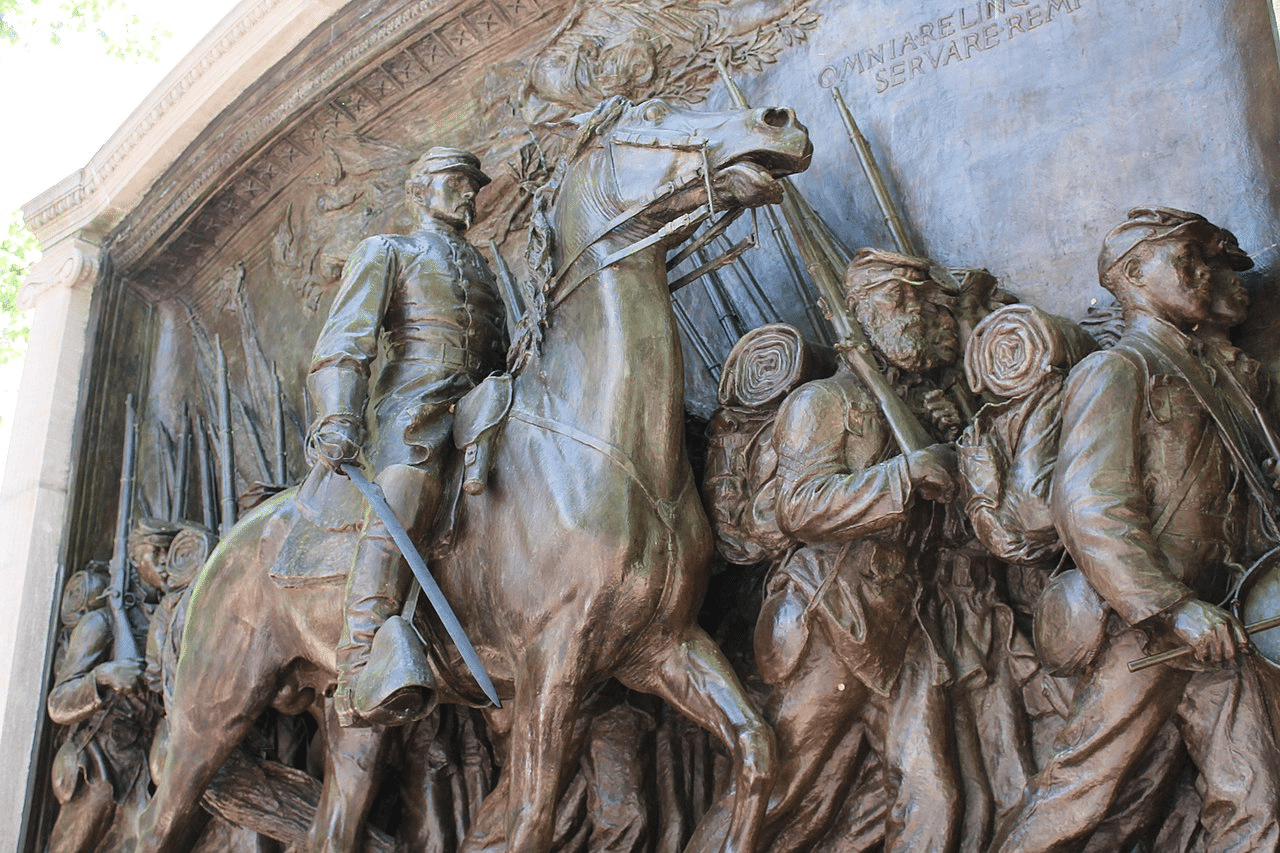
7. USS Constitution
Our next Boston landmark commemorates an amazing ship which defeated four British frigates during three separate engagements. In battle, it earned the nickname “Old Ironsides” because it appeared as if enemy cannonballs could not penetrate the ship’s strong oak hull.
At #7 on our list of the Best Boston Landmarks is the USS Constitution.
The USS Constitution played a significant role in the early history of the United States. During the War of 1812, the ship earned its nickname “Old Ironsides” when British cannonballs bounced off its thick wooden hull.
The Constitution won several key victories against British ships and helped establish the United States Navy as a formidable force on the seas.
After its active duty service, the USS Constitution was used as a training ship for midshipmen and cadets. It was also sent on various ceremonial missions to promote goodwill and diplomacy around the world.
In the early 1900s, the USS Constitution was in danger of being scrapped due to its age and deteriorating condition. However, a public outcry saved the ship, and it was restored and returned to its berth in Boston Harbor.
Today, the USS Constitution is a National Historic Landmark and is open to the public for tours. Visitors can learn about the ship’s history and see the original cannons, sails, and other artifacts on board. The ship remains an important symbol of American naval power and the country’s proud maritime heritage.
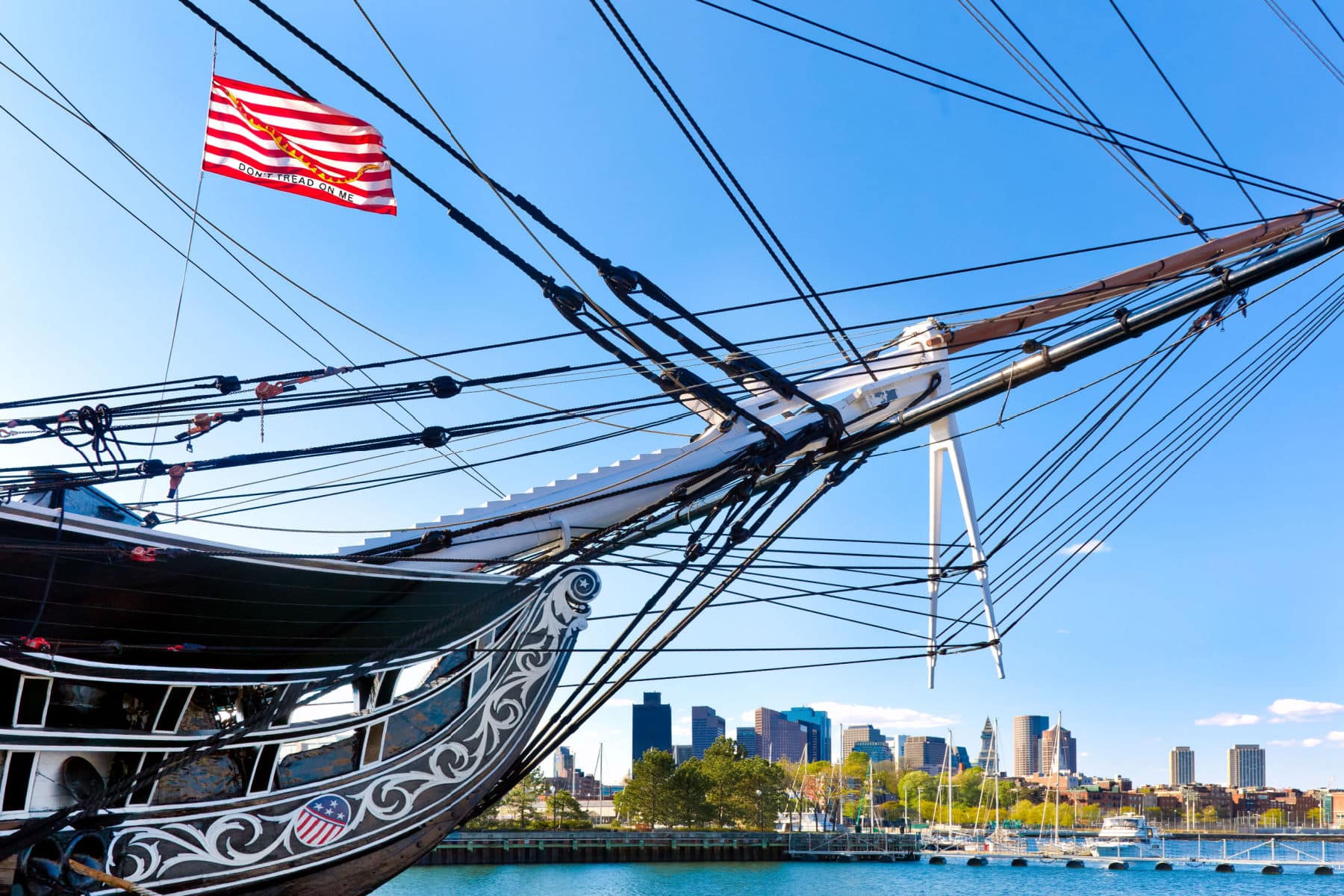
6. Boston National Historical Park
Our next Boston landmark is the historic site where American colonists gathered to challenge British rule in the years leading up to the American Revolution – including protests of the Boston Massacre and the historic meeting of over 5,000 people that led to the Boston Tea Party.
At #6 on our list of the Best Boston Landmarks is the Boston National Historical Park.
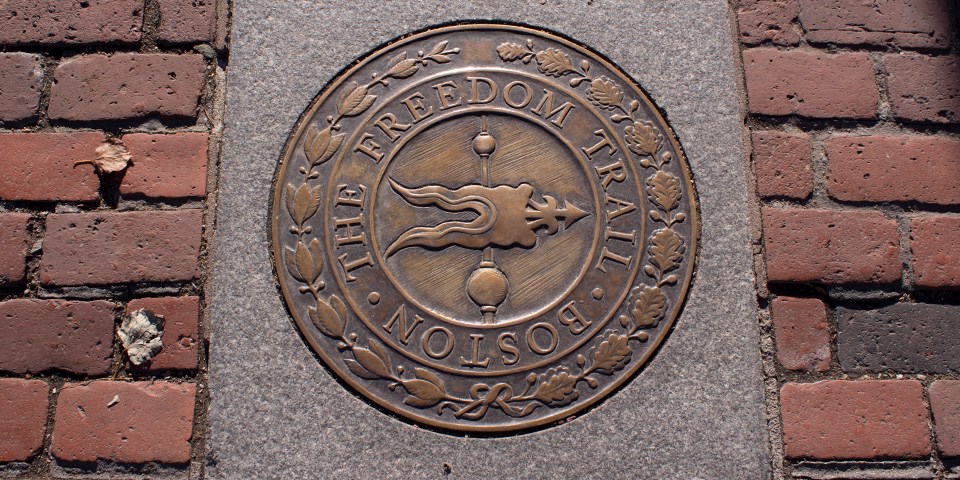
The History Of The Park
The history of the park begins with the American Revolution, when Boston played a crucial role in the fight for independence from Great Britain. The city was the site of several key events, including the Boston Massacre, the Boston Tea Party, and the Battles of Lexington and Concord.
In the years following the American Revolution, Boston continued to play an important role in American history. The city was a center of commerce and industry, and it was also a hub of abolitionist activity during the lead-up to the Civil War.
The idea for the Boston National Historical Park was first proposed in the 1950s as a way to preserve and share the city’s rich history.
In 1961, the National Park Service established the Boston National Historic Sites, which included the Paul Revere House, the Old North Church, and the Old South Meeting House.
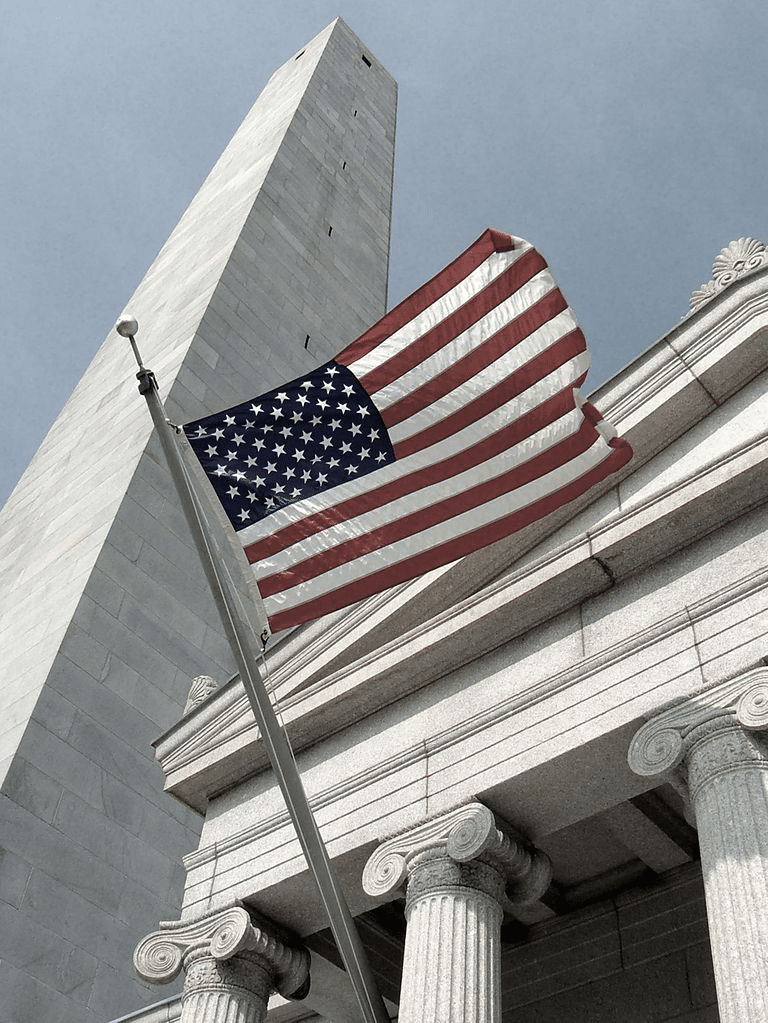
Top 5 Boston Landmarks
5. The Paul Revere House
We’re on to the Top 5 Boston landmarks. Our next Boston landmark is oldest house in downtown Boston, this 3-story building was the home of silversmith and Boston Patriot Paul Revere. Today it stands as one of the first historic homes to be be converted to a museum open to the public.
At #5 is The Paul Revere House.
The home is named after Paul Revere, a silversmith and patriot who lived there with his family from 1770 to 1800. Revere is best known for his famous “midnight ride” on April 18, 1775, during which he rode to Lexington, Massachusetts, to warn Samuel Adams and John Hancock of British troops approaching.
After the Revere family sold the house in 1800, it went through several owners and was used for various purposes, including as a tenement housing multiple families. In the early 1900s, the Paul Revere House was slated for demolition, but a group of concerned citizens banded together to save it.
The Paul Revere House was restored and opened to the public as a museum in 1908. Today, visitors can tour the house and see how Revere and his family would have lived in the 18th century. The home is filled with period furnishings, including many pieces that belonged to the Revere family.
The Paul Revere House is a National Historic Landmark and remains an important symbol of Boston’s rich history and the role that its residents played in the American Revolution.
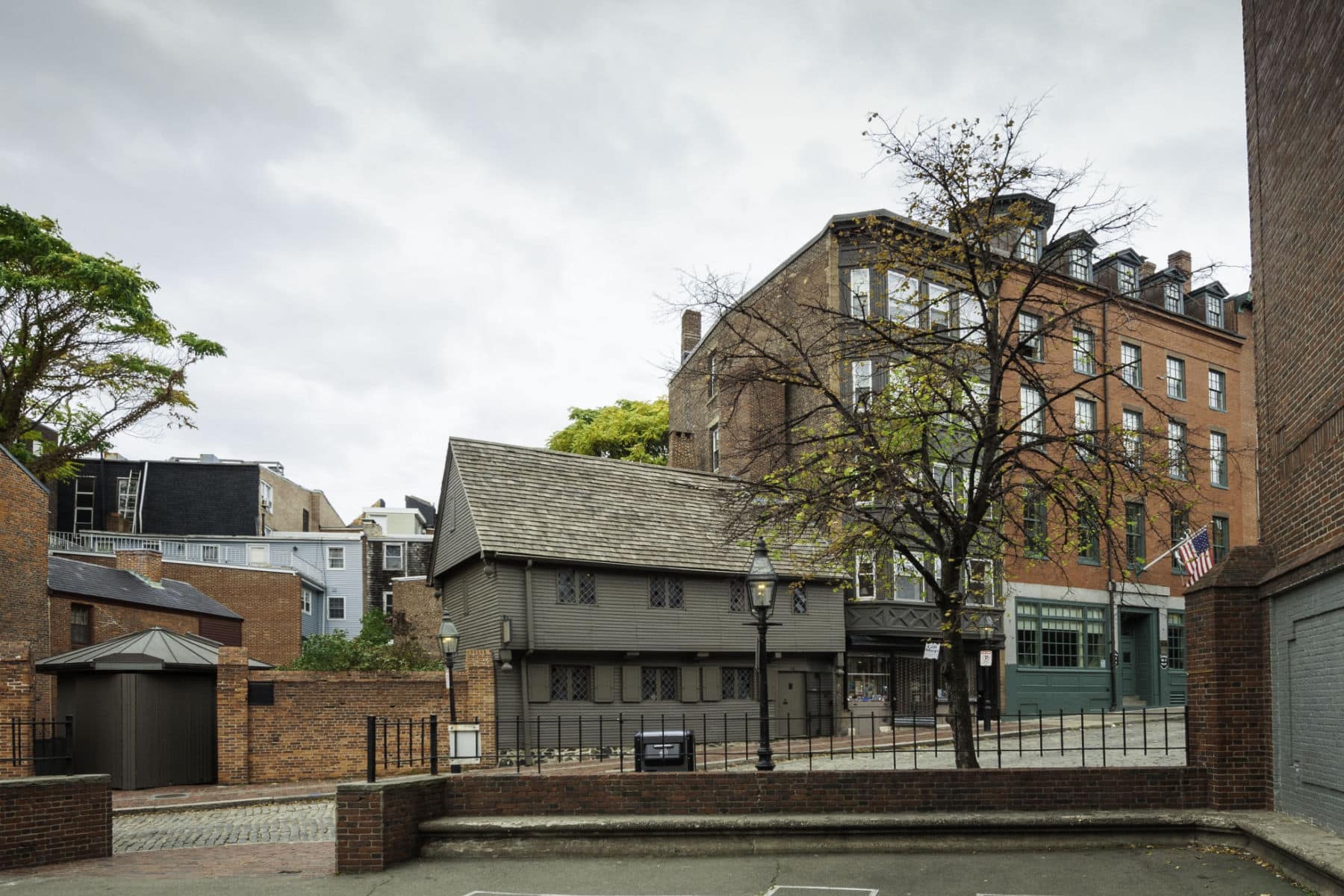
4. Massachusetts State House
Our next Boston landmark was designed by American-born architect Charles Bulfinch and was completed in 1798. Its neoclassical-federal style was inspired by the magnificent Greek and Roman temples of Europe. In particular Bulfinch was inspired by federal-style civic architecture in London.
At #4 on our list of the Best Boston Landmarks is the Massachusetts State House.
The design of the State House was inspired by the classical architecture of ancient Greece and Rome, and it features a large dome that is a familiar landmark in the Boston skyline. The dome was originally made of wood, but it was later covered in copper by Paul Revere’s company.
The Massachusetts State House has been the site of many important events in Massachusetts and American history. In 1820, the building hosted the state’s constitutional convention, which resulted in the creation of a new state constitution. During the Civil War, the State House served as a recruitment center and was also the site of speeches by famous abolitionists, including Frederick Douglass.
In addition to its historical significance, the State House is also an important center of government for Massachusetts. It houses the offices of the governor and lieutenant governor, as well as the chambers of the Massachusetts House of Representatives and Senate.
Today, the Massachusetts State House is open to visitors for guided tours, which provide an opportunity to learn about the history and architecture of the building. The State House remains an iconic symbol of Massachusetts and a testament to the state’s rich history and enduring democracy.
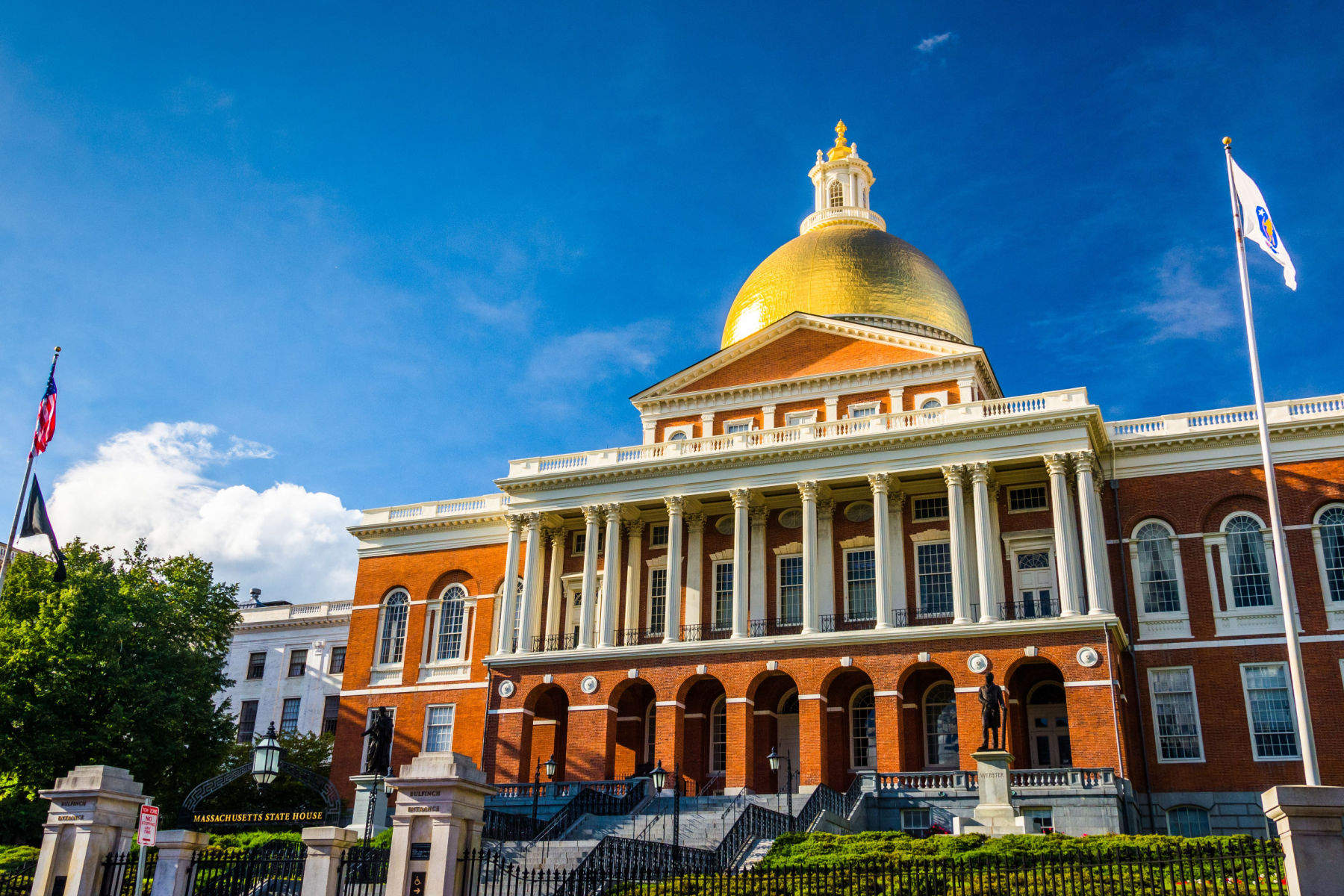
3. Symphony Hall
Our next Boston landmark has delighted audiences with world-renowned acoustics since its construction in 1900. This National Historic Landmark is also a popular event space, having hosted everything from weddings, to comedy shows, to squash tournaments.
At #3 on our list of the Best Boston Landmarks is Symphony Hall.
Symphony Hall is a concert hall located in the Back Bay neighborhood of Boston, Massachusetts. The hall is home to the Boston Symphony Orchestra and is considered one of the finest concert halls in the world.
Symphony Hall was built in 1900 and designed by the renowned architect Charles Follen McKim of the firm McKim, Mead & White. The hall was designed specifically for the Boston Symphony Orchestra and was intended to be one of the best acoustically engineered concert halls in the world.

Symphony Hall in Boston | Courtesy of Wikimedia Commons
The Hall Has A Unique Shoebox Shape
In order to achieve the best possible acoustics, the hall was designed with a unique shoebox shape, which allowed for optimal sound diffusion and resonance. The walls of the hall were covered with plaster and horsehair, and the ceiling was shaped like an inverted saucer to help distribute sound evenly throughout the space.
Over the years, Symphony Hall has hosted some of the most famous and influential musicians and conductors in history, including Sergei Rachmaninoff, Leonard Bernstein, and Yo-Yo Ma.
The hall has also played an important role in the development of music in the United States, hosting premieres of works by American composers such as Aaron Copland and Leonard Bernstein.
Today, Symphony Hall remains a beloved cultural institution in Boston and continues to attract visitors from around the world. Its superb acoustics and rich history make it a unique and treasured landmark in the world of classical music.

Interior of Symphony Hall before a concert | Courtesy of Wikimedia Commons
2. Fenway Park
We’re on to our final two Boston landmarks. In the runner-up spot at #2 is a place that’s the oldest active ballpark in major league baseball. Because of its age and constrained location in Boston’s dense Fenway–Kenmore neighborhood, the park has many quirky features, including “The Triangle”, Pesky’s Pole, and the Green Monster in left field.
At #2 on our list of the Best Boston Landmarks is Fenway Park.
Fenway Park was built in 1912 and was designed by architect James E. McLaughlin. The stadium was originally called “The Boston Red Sox Baseball Grounds” but was later renamed Fenway Park after the neighborhood in which it is located.
Over the years, Fenway Park has played host to many historic moments in baseball history. In 1912, the stadium hosted its first World Series game, and in 1918, the Red Sox won their first World Series championship at Fenway Park. The stadium also hosted the famous “Impossible Dream” season of 1967, in which the Red Sox made an unexpected run to the World Series.
Fenway Park is also known for its distinctive features, including the “Green Monster” left field wall, which stands 37 feet tall, and the manually-operated scoreboard, which is still used to display game information.
Despite its age, Fenway Park remains a beloved cultural institution in Boston and a treasured landmark for baseball fans around the world. The stadium has undergone numerous renovations over the years, including the addition of luxury boxes and updated facilities, but has maintained its historic character and charm.
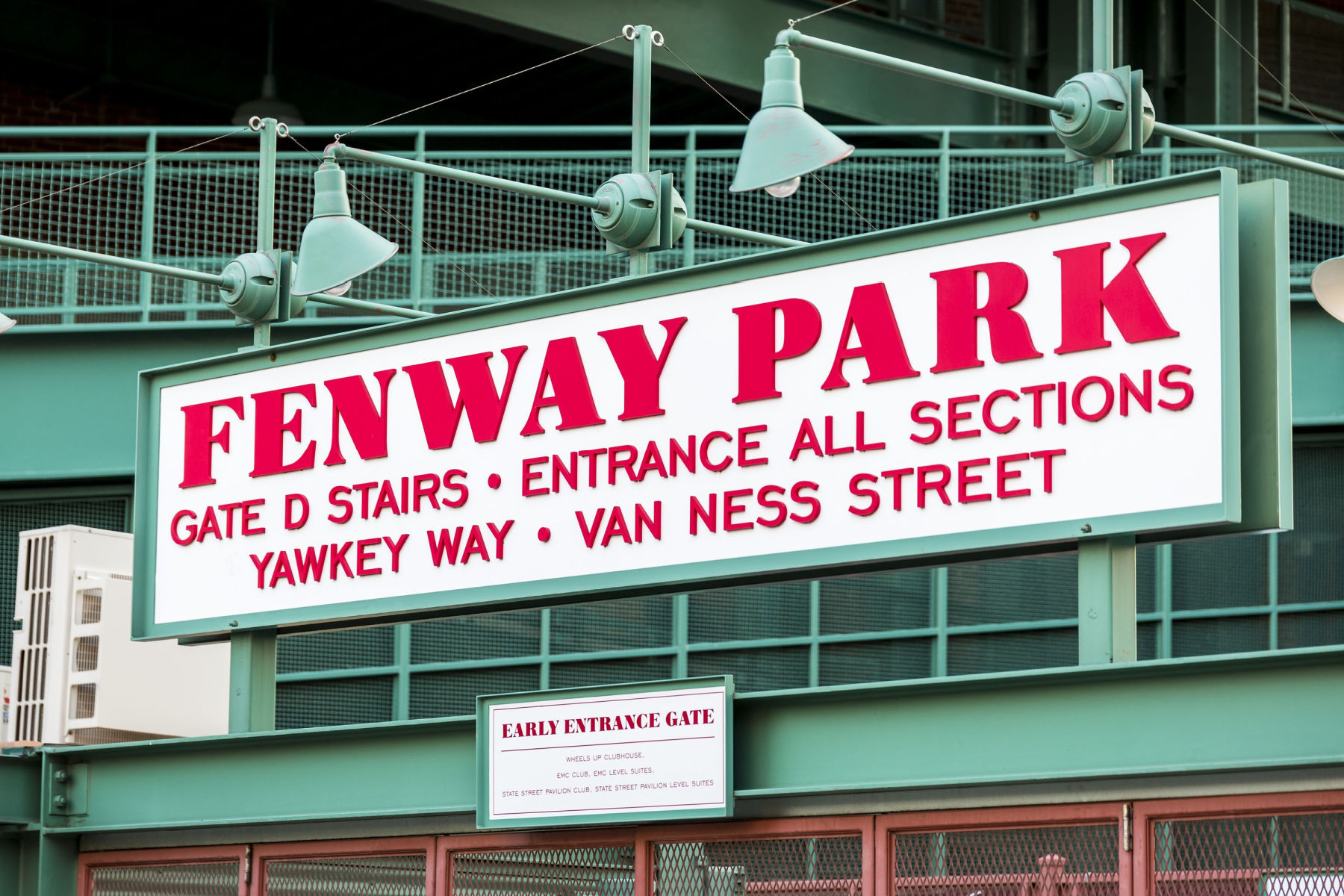
1. Freedom Trail
As the #1 Boston landmark, More Than Just Parks has selected a unique collection of museums, churches, meeting houses, burying grounds, parks, a ship, and historic markers that tell the story of the American Revolution and beyond.
Welcome to the Freedom Trail!
The Freedom Trail is a 2.5-mile long walking trail in Boston, Massachusetts that passes through 16 historically significant sites, including churches, meeting houses, museums, and burial grounds. The trail was established in 1951 and has since become one of the most popular tourist attractions in Boston.
The idea for the Freedom Trail was first proposed in the 1940s by local journalist William Schofield, who envisioned a trail that would connect important historical sites in Boston. The idea gained support from a group of local historians and was eventually funded by the city of Boston and the National Park Service.

It Begins At The Boston Common
The trail begins at the Boston Common, the oldest public park in the United States, and passes through many important sites related to the American Revolution, including the Massachusetts State House, Paul Revere’s House, and the Old North Church, where the famous “one if by land, two if by sea” lanterns were hung during Paul Revere’s midnight ride.
Other important sites along the trail include the Granary Burying Ground, where many famous Americans, including John Hancock and Samuel Adams, are buried, and the USS Constitution Museum, which is dedicated to the history of the U.S. Navy’s oldest commissioned warship.
Today, the Freedom Trail is one of the most popular tourist attractions in Boston, attracting millions of visitors each year. The trail is marked by a red line painted on the sidewalks and streets, making it easy for visitors to navigate and explore Boston’s rich history and cultural heritage.
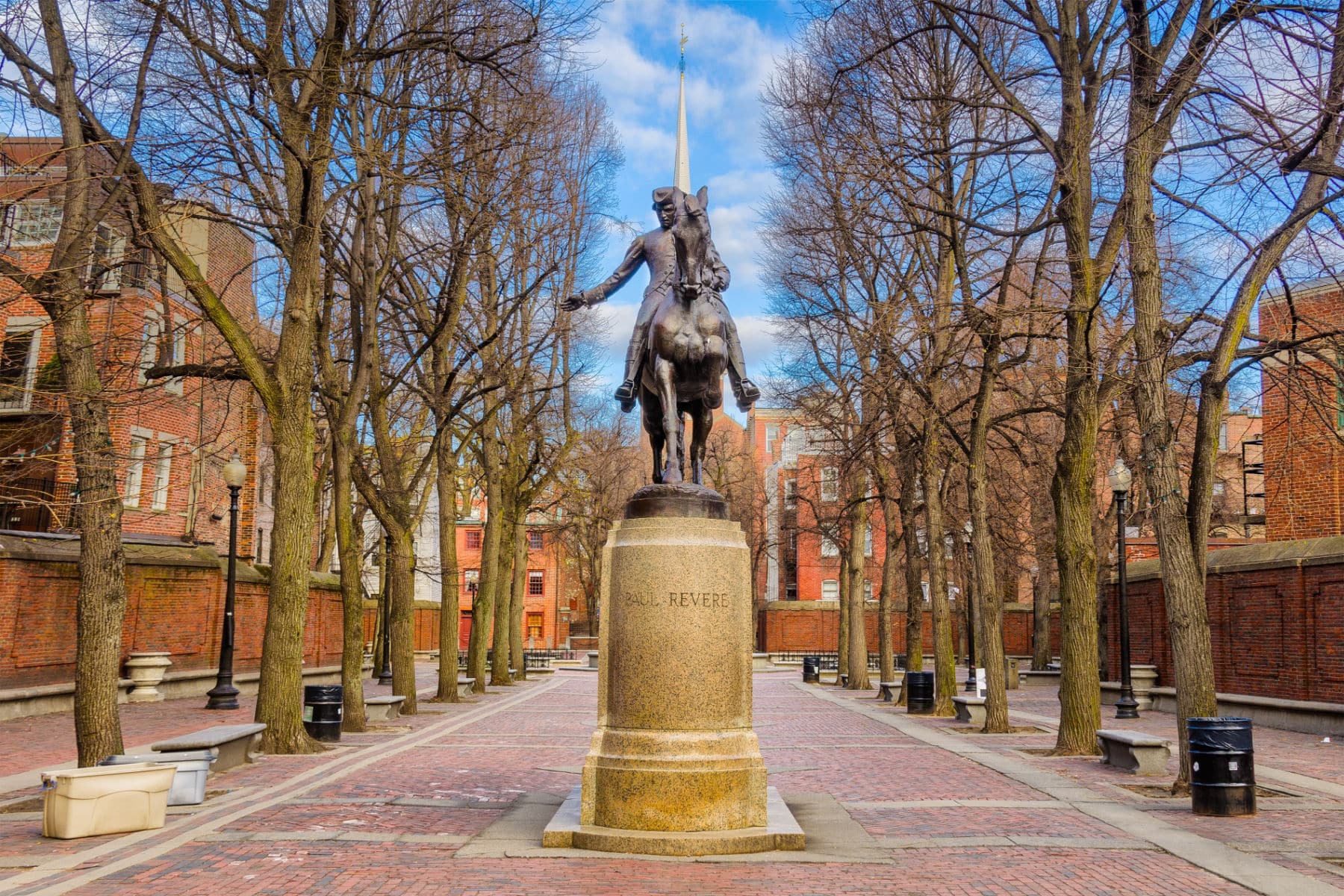
Map Of Boston Landmarks
List Of Boston Landmarks
- Freedom Trail
- Fenway Park
- Symphony Hall
- Massachusetts State House
- The Paul Revere House
- Boston National Historical Park
- USS Constitution
- Boston African-American National Historic Site
- Old North Church & Historic Site
- Boston Tea Party Ships & Museum
- Boston Public Library
- Isabella Stewart Gardner Museum
- Faneuil Hall Marketplace
- The New England Holocaust Memorial
- Boston Irish Famine Memorial
Why Trust Us About Boston Landmarks?
We’re Jim Pattiz and Will Pattiz, collectively known as the Pattiz Brothers and we absolutely LOVE the national parks.
You should probably know that we don’t just make this stuff up out of thin air. We’ve spent our entire adult lives exploring and filming America’s national parks and public lands.
We’ve worked with the National Park Service, the Department of Interior, USDA, U.S. Forest Service, and more for years creating films on important places and issues. Our work has been featured in leading publications all over the world and even some people outside of our immediate family call us experts on the national parks.
And, in 2018, our father – having spent a lifetime teaching history – joined us so that he could help us to tell the stories behind these amazing places.
Meet The Parks Brothers
We Hope You’ll Follow Our Journey

Our goal here at More Than Just Parks is to share the beauty of America’s national parks and public lands through stunning short films in an effort to get Americans and the world to see the true value in land conservation.
We hope you’ll follow our journey through the parks and help us to keep them the incredible places that they are. If you’re interested in joining the adventure then sign up below!
Related Links
What Is A National Park? To learn more about the difference between the various National Park Service designations check out our article that explains everything!
National Parks In Massachusetts: 18 SURPRISING Massachusetts National Parks
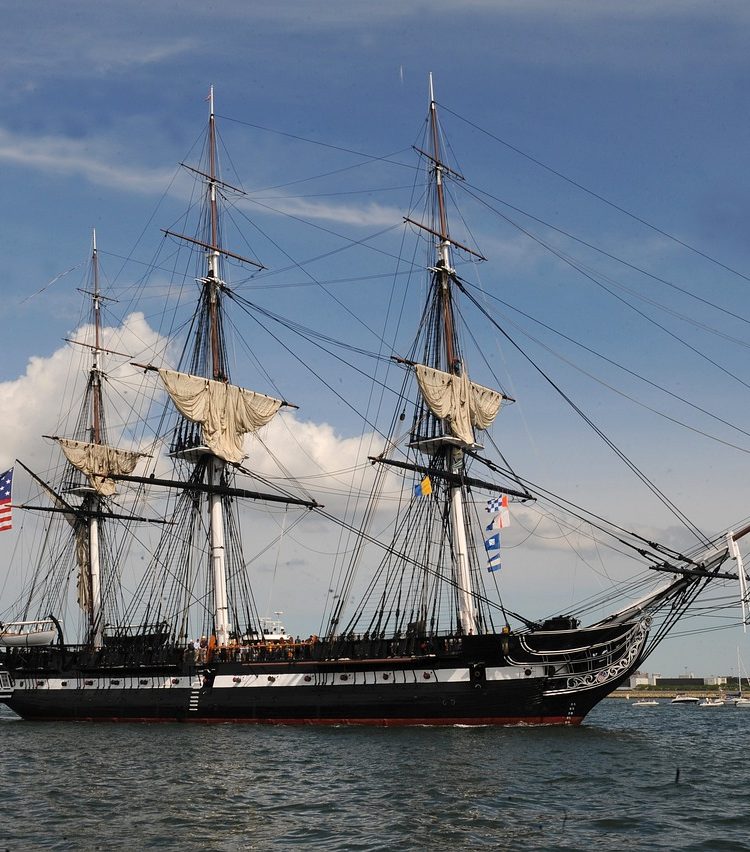

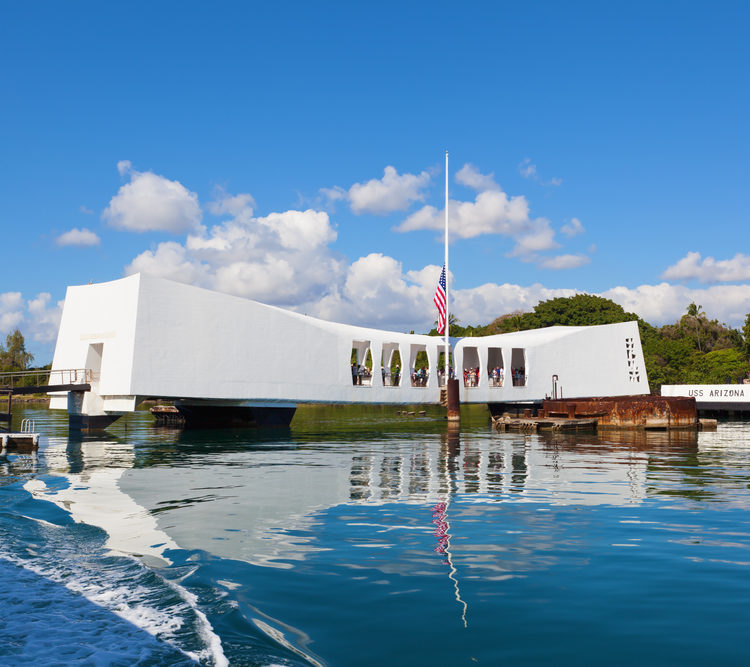
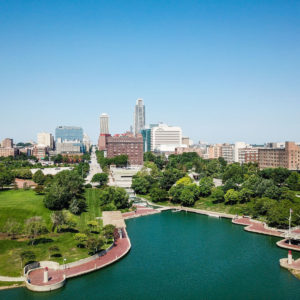

Leave a Reply